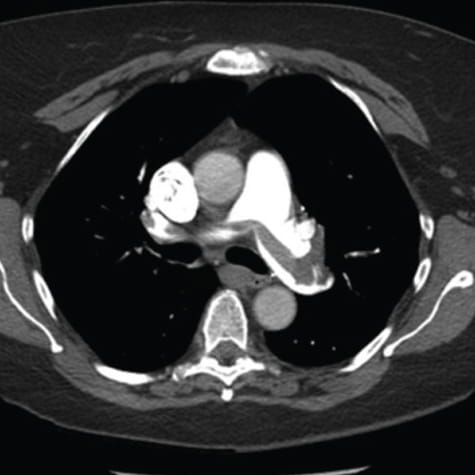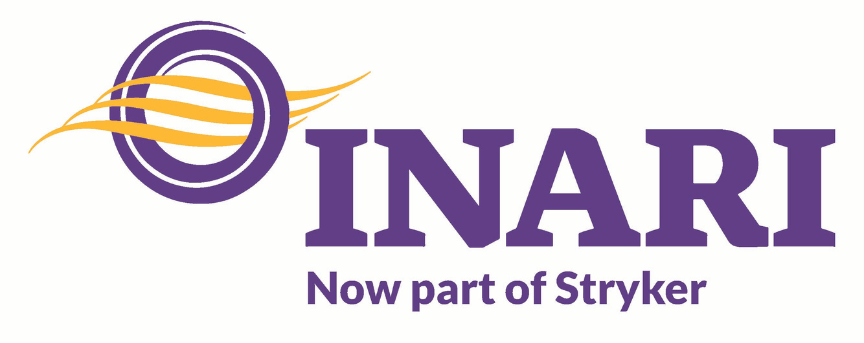Pulmonary Embolism Quality Improvement Initiative

Pulmonary embolism (PE) is a type of venous thromboembolism (VTE), or blood clots in the veins. PE occurs when a blood clot breaks free, usually from a deep vein in the legs, and becomes lodged in the lungs. VTE is a potentially life-threatening condition that contributes to up to 100,000 deaths each year in the United States1.
Recent data show that PE-related mortality increased between 2008 and 2018, underscoring its persistent and growing impact as a leading cause of cardiovascular morbidity and mortality2.
Despite its high clinical burden, PE continues to be underdiagnosed, undertreated and inconsistently managed across health systems4. Significant variability exists in how hospitals identify, risk-stratify, treat and monitor patients with PE, which results in preventable complications, poor outcomes and persistent disparities in care.
These ongoing gaps in practice underscore the urgent need to implement robust, evidence-based systems that ensure timely diagnosis, effective treatment and comprehensive follow-up for all people affected by PE.
Participating Sites:
| Froedtert Hospital | Milwaukee, WI |
| HCA Healthcare's Medical City Healthcare |
Dallas, TX |
| HCA Healthcare's Mission Hospital | Asheville, NC |
| HCA Healthcare's TriStar Centennial Medical Center | Nashville, TN |
| Henry Ford Hospital and Health Network | Detroit, MI |
| Inova Fairfax Hospital | Fairfax, VA |
| Intermountain Medical Center | Murray, UT |
| MedStar Washington Hospital Center | Washington, DC |
Mission Hospital Regional Medical Center |
Mission Viejo, CA |
| Norwalk Hospital part of Nuvance Health | Norwalk, CT |
| NYU Langone Health | New York, NY |
| OhioHealth Riverside Methodist Hospital | Columbus, OH |
| Penn Presbyterian Medical Center | Philadelphia, PA |
| Prisma Health Richland Hospital | Columbia, SC |
| Sacred Heart Health System | Pensacola, FL |
| Saint Francis Hospital | Tulsa, OK |
| Spartanburg Regional Medical Center - Church Street Campus | Spartanburg, SC |
| Stanford Health Care | Stanford, CA |
| Yale - New Haven Hospital | New Haven, CT |
The Pulmonary Embolism Quality Initiative
To address persistent gaps in PE care and strengthen systems of care nationwide, the American Heart Association has launched a three-year quality improvement initiative to:
- Uncover knowledge gaps
- Develop solutions to known and unknown barriers
- Create a national framework for a PE system of care
The Association will establish a diverse 20-site Learning Collaborative Cohort, representing urban, rural and under-resourced communities. Champions and care teams will follow an “all teach, all learn” format to develop and share best practices for PE identification, triage, treatment and follow-up, with the goal of creating replicable models of care that can be disseminated nationally.

Additional Resources
- Horlander K, Mannino D, Leeper K. “Pulmonary embolism mortality in the United States, 1979-1998: an analysis using multiple-cause mortality data,” Arch Intern Med. 2003 Jul 28;163(14):1711-7. doi: 10.1001/archinte.163.14.1711.
- Martin K, Molsberry R, Cuttica M, et al. “Time Trends in Pulmonary Embolism Mortality Rates in the United States, 1999 to 2018.” JAHA. 2020 Aug 17; 9(17). https://doi.org/10.1161/JAHA.120.016784.
- Martin S, et al. 2025 Heart Disease and Stroke Statistics: A Report of US and Global Data From the American Heart Association. Chapter 24. Circulation. 2025;151(8):e41–e660. https://www.ahajournals.org/doi/epub/10.1161/CIR.0000000000001303.
- Hadid A, Jalabi A, Anka M, Cevik A. “Poor adherence to the recommended pulmonary embolism diagnostic pathway in the emergency department: A retrospective cohort study.” Turk J Emerg Med. 2023 Jan 2;23(1):44–51. doi: 10.4103/2452-2473.366486; Kahn S, de Wit K. “Pulmonary Embolism.” N Engl J Med 2022;387:45-57 doi: 10.1056/NEJMcp2116489.
